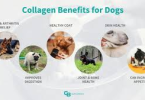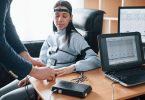Over the past 20 years, veterinary medicine has gained tremendous momentum and technologies that were previously exclusive to human practices began to find their way into animal hospitals. Vet endoscopy is one of the innovations that is notable among them. With the aid of thin, pliable tools fitted with a camera, veterinarians are now able to examine the interior of an animal too without having to incur the considerable damage of making a surgical incision.
This trend toward reduced-invasiveness is not a change that involves merely new technology-it is a paradigm change in the examination, treatment, and care of animals. The firms that focus on endoscopic solutions are imbuing this development, so that veterinary professionals can have the use of sound, accurate, and effective tools.
What Is Vet Endoscopy?
Endoscopy is a minimally invasive diagnostic and treatment modality that enables a veterinarian to see the internal body parts of his/her animals. The probe is a thin tube with a high-resolution camera and source of light that is inserted through natural body apertures (including mouth or rectum) or through small surgical incisions.
This process sends real time, high definition images that assist and enable in accurate diagnosing, and even treatment on the spot. An example is foreign body in a dog’s stomach that could be extracted through endoscopy thus avoiding major surgery in the stomach.
Advantages of Veterinary Endoscopy to the Animal and Veterinarians
Fewer Intrusive, faster recovery
Among the obvious advantages of vet endoscopy is that it is minimally invasive. Large incision procedures, prolonged anesthesia and time of healing are part of the traditional exploratory surgeries. The endoscopy causes less trauma, lowers risks of infection, and pets recovering quicker.
Enhanced Diagnostic Prowess
HD pictures give objectively a clearer and more elaborate picture of the affected part. This accuracy is more crucial specifically in the diagnosis of gastrointestinal disorders, airway-related disorders, and abnormalities of the joints.
Reduced Stress for Pet Owners
The pet owners always experience anxiety when their pets go through surgery Endoscopy reduces the risks, the time taken in the procedures, and recovery times. This guarantee earns greater confidence among veterinary professionals and the clients.
Uses of Vet Endoscopy in the Contemporary Clinic
Gastrointestinal Endoscopy
This is the most frequent place of application and can help veterinarians detect ulcers, tumors, polyps, or a foreign object. As an illustration, an endoscope is commonly used to retrieve a toy which the dog has swallowed instead of subjecting it to surgery.
Bronchoscopy and Airway examination
Bronchoscopy can also be done where a bronchoscope is inserted to examine the trachea and lungs to find out any obstructions, infection or inflammation.
Orthopedics Arthroscopy
Arthroscopy can be performed on animals that have joint pain or lameness; the vet can view their cartilage and ligaments. Such methodology helps to facilitate less invasive orthopedic surgery
Monitoring Reproductive health
Endoscopy can also be used in reproductive care especially in large animals where the endoscope is used to visualize the reproductive tract aiding in both diagnostics and assisted reproductive procedures.
The Place of Endoscopic Solutions Providers
The development of endoscopy in the veterinary field is possible due to the companies that create endoscopic solutions that suit veterinary demands. These manufacturers do not only fabricate hybrid and rigid endoscopes, but they also sell accessories such as endoscopic biopsy forceps, endoscopic retrieval baskets, and endoscopic sterilization apparatus.
Most of the manufacturers collaborate with the professional community of vets so they could optimize their products. By incorporating feedback of actual clinical use, they make sure that such devices are durable, easy-to-use, and that they can put up with the challenges that are peculiar about animal care.
Challenges and Considerations
Vet endoscopy offers some distinct benefits and there are some barriers to the adoption. Equipment equipment could be very costly and clinics have to weigh the cost of investment versus patient load. Veterinarians are required to sacrifice time in order to get adequate training on how to read image endoscopes and use endoscopic tools conveniently.
Nevertheless, accessibility is increasing in light of technology becoming more available, at a more affordable price. CME and practical classes are making more and more veterinarians acquire the necessary skills in order to implement endoscopy into their practice.
The Future of Veterinary Endoscopy
The future of veterinary endoscopy will continue to be improved by innovation in imaging, robotics, and AI. Higher-resolution cameras (4K) and analytics software that uses artificial intelligence and can interpret images may enhance detection of otherwise subtle abnormalities. Even less invasive diagnostics may eventually be possible with wireless capsule endoscopy (already used in human medicine), perhaps in small animals.
The future is more to look forward to in endoscopy as precision, accessibility, and patient outcomes will also improve significantly to ensure that Veterinary Care continues to be revolutionized by endoscopy.
Conclusion
Vet endoscopy is a major advancement in the veterinary field and it provides minimally invasive procedures that benefit by enhancing diagnosis, giving faster recovery, and minimizing patient suffering. Supporting a clinician with innovative endoscopic care providers is the only way to increase your diagnostic and treatment capabilities and provide animals with better, safer, and more comfortable care.
With greater clinics embracing endoscopy with pets, pet owners will be viewing endoscopy as less of a luxury and more as a standard of care. By adopting innovation, veterinary professionals can be guaranteed that they will continue to be at the center of animal health in upcoming years.







